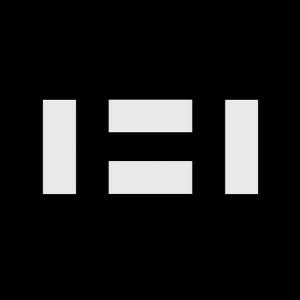Photos of university / #csuci
Digital Design Concentration at California State University offers students an innovative and comprehensive education in the field of digital media and visual communication. This program is designed to equip students with the fundamental skills and advanced techniques necessary for success in today's fast-paced digital environment. Students will explore a wide range of topics, including graphic design, interactive media, web design, user experience (UX), and digital illustration. The curriculum emphasizes both creative development and technical proficiency, ensuring graduates are well-prepared for careers in various digital design industries. Through hands-on projects, collaborative work, and real-world applications, students gain practical experience that enhances their artistic and technical capabilities. The program also encourages students to stay current with the latest industry trends and technologies, fostering an innovative mindset and adaptable skill set. Additionally, students have access to state-of-the-art facilities and resources, such as advanced design software, digital labs, and experienced faculty mentors. Upon completion of the program, graduates will be able to create compelling visual content for websites, apps, multimedia campaigns, and other digital platforms. They will also develop strong problem-solving skills and an understanding of user-centered design principles. The Digital Design Concentration is ideal for students passionate about visual storytelling, digital technology, and creative expression, as well as for those aiming to make a significant impact in the digital media landscape. This program prepares students for careers as web designers, digital illustrators, multimedia artists, user interface (UI) designers, and digital content creators. With a focus on both artistic excellence and practical application, the Digital Design Concentration offers a pathway to a dynamic and rewarding profession in the digital age.
120 unitsSummary of Units:
|
||||||||||||
Lower Division Requirements - 34-35 unitsMATH 150 - Calculus I Units: 4 MATH 151 - Calculus II Units: 4 MATH 230 - Logic and Mathematical Reasoning (Cross-listed as PHIL 230) Units: 3 MATH 240 - Linear Algebra Units: 3 MATH 250 - Calculus III Units: 3 PHYS 200 - General Physics I Units: 4 Select one of the following:PHYS 201 - General Physics II Units: 4 and one additional science course Units: 3-4 or One two-semester science sequence Units: 7-8 Select one of the following:COMP 105 - Computer Programming Introduction Units: 3 COMP 150 - Object-Oriented Programming Units: 4 Select an additional Computer Science course:COMP 150 - Object-Oriented Programming Units: 4 or above or COMP 102 - Web Development Units: 3 Upper Division Requirements - 20 unitsMATH 300 - Discrete Mathematics Units: 3 MATH 331 - History of Mathematics Units: 3 MATH 350 - Differential Equations and Dynamical Systems Units: 3 MATH 351 - Real Analysis Units: 3 MATH 352 - Probability and Statistics Units: 3 MATH 451 - Complex Analysis Units: 3 MATH 499 - Senior Colloquium Units: 1 (Twice) Electives in Major - 9-13 unitsNote: Courses used for the concentrations cannot be counted as elective. Students planning on teaching math have to choose MATH 492 for field experience requirement. Other courses recommended for teaching careers are marked with T. MATH 318 - Mathematics for Secondary School Teachers Units: 3 T MATH 330 - Mathematics and Fine Arts Units: 3 T MATH 345 - Digital Image Processing (Cross-listed as COMP 345, PHYS 345) Units: 3 MATH 354 - Analysis of Algorithms Units: 3 MATH 393 - Abstract Algebra I Units: 3 T MATH 429 - Operations Research Units: 3 MATH 430 - Research Design and Data Analysis Units: 3 MATH 437 - Mathematics for Games, Simulations, and Robotics Units: 3 MATH 438 - Philosophy of Mathematics (Cross-listed as PHIL 438) Units: 3 MATH 445 - Image Analysis and Pattern Recognition (Cross-listed as PHYS 445, COMP 445)Units: 3 MATH 448 - Scientific Computing Units: 3 MATH 450 - Partial Differential Equations and Mathematical Physics Units: 3 MATH 452 - Computational Bioinformatics (Cross-listed as COMP 452) Units: 4 MATH 480 - Differential and Riemannian Geometry Units: 3 MATH 482 - Number Theory and Cryptography Units: 3 T MATH 484 - Algebraic Geometry and Coding Theory Units: 3 MATH 490 - Topics in Modern Mathematics Units: 3 MATH 492 - Internship Units: 1-3 T (Required for teachers) MATH 494 - Independent Research Units: 1-3 MATH 497 - Directed Studies Units: 3 MATH 499 - Senior Colloquium Units: 1 Concentration - 6-10 unitsBy the sophomore year, in order to plan their electives, students should decide on one of the concentrations and take all courses listed in that section. Choice of other concentrations or individualized concentrations is possible upon approval of the mathematics advisor. Digital Design - 9 unitsMATH 393 - Abstract Algebra I Units: 3 ART 108 - Visual Technologies Units: 3 Select one of the following:ART 312 - Digital Media Art: Time-based Imaging Units: 3 ART 314 - Digital Media Art: Digital Photography Units: 3 Interdisciplinary GE Course outside major - 3 unitsSelect one interdisciplinary GE Course 3 unitsRecommended: COMP 447 - Societal Issues in Computing Units: 3 COMP 449 - Human-Computer Interaction (Cross-listed as PSY 449) Units: 3 PHYS 434 - Introduction to Biomedical Imaging (Cross-listed as BIOL 434, HLTH 434) Units:4 |
To graduate, students must complete 120 units minimum (40 units must be upper division) including all General Education (GE) and Graduation Requirements . The following areas must be included:
Additional Lower Division A-E (GE) Requirements not met within the major
Nine units of Upper Division Upper Division Interdisciplinary GE (UDIGE), courses are numbered 330-349 and 430-449. Six units may be within the major, 3 units must be outside the major (C or better grade)
Multicultural Requirement (C or better grade)
Language Requirement (C or better grade)
American Institutions Requirement
Free electives as needed to meet minimum units for graduation
The California State University system offers a variety of financial aid options to support students enrolled in the Digital Design Concentration. Students can apply for federal and state grants, including the Pell Grant, which provides need-based assistance to eligible undergraduate students. The Cal Grant program is also available, offering tuition assistance and living stipends to qualified students based on financial need, academic achievement, and other criteria. In addition to grants, many students rely on federal student loans, such as Direct Subsidized and Unsubsidized Loans, which offer low-interest rates and flexible repayment options. Work-study programs are also available, allowing students to work part-time on or near campus to earn funds that can be used toward their educational expenses.
California State University also provides campus-specific scholarships and academic awards for students demonstrating merit, leadership, or financial need. Students are encouraged to complete the Free Application for Federal Student Aid (FAFSA) or the California Dream Act Application, which are essential steps to determine eligibility for financial assistance. The university's Financial Aid Office offers guidance and support to help students identify the most suitable financing options based on their individual circumstances.
In addition to external financial aid opportunities, students may explore private scholarships and grants offered by organizations and corporations supporting higher education and digital arts fields. Payment plans or tuition installment options are also available to help manage fees over the course of the program. Many students fund their studies through a combination of these sources, enabling them to pursue their education in Digital Design without undue financial hardship. Overall, the university's comprehensive financial aid resources aim to make education accessible and affordable to a diverse student body, fostering a supportive environment for students specializing in digital arts and design.
Digital Design is a concentration within the Graphic Design program at California State University. This specialization focuses on developing students' skills in creating digital media, including web design, digital illustration, animation, user interface (UI) and user experience (UX) design, and multimedia production. The curriculum emphasizes both technical proficiency and creative problem-solving, preparing students to meet the demands of a rapidly evolving digital industry.
Students in this concentration are introduced to various software tools essential for digital media production, such as Adobe Creative Suite, Sketch, and other industry-standard applications. The program combines theoretical coursework with practical projects, enabling students to build a professional portfolio showcasing their ability to design engaging digital content across multiple platforms. Emphasis is placed on understanding the principles of visual communication, digital aesthetics, and interactive design.
Throughout their studies, students have opportunities to collaborate on real-world projects, participate in internships, and attend workshops led by industry professionals. The program aims to develop not only technical skills but also critical thinking, creative innovation, and effective communication skills. Graduates of the Digital Design concentration often pursue careers in web design, digital marketing, animation studios, gaming industries, app development, and other sectors requiring strong digital content creation skills.
The faculty includes experienced designers and digital media experts who mentor students and keep the curriculum aligned with current industry trends. The program also encourages exploration of emerging technologies such as virtual reality (VR), augmented reality (AR), and interactive installations. By integrating these cutting-edge topics, the program ensures students are well-prepared to adapt to technological advancements and leadership roles within the digital design field.
In addition to coursework, students are encouraged to participate in design competitions, exhibitions, and professional associations to enhance their exposure and network within the industry. Graduates are equipped with a comprehensive understanding of digital design principles, technical skills, and a creative mindset necessary to succeed in the dynamic digital landscape. The program fosters innovation, interdisciplinary collaboration, and lifelong learning, making it a valuable foundation for a career in digital design and related fields.


